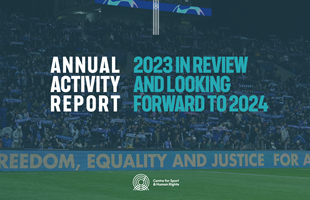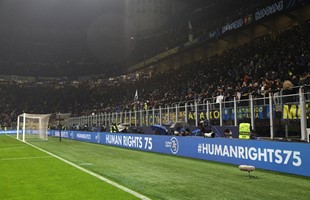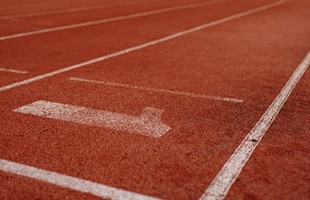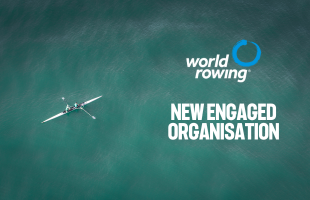Sport as a Vehicle for Child Friendly Cities
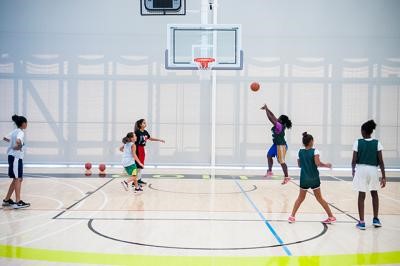
From 15-18 October 2019, UNICEF and the City of Cologne hosted the first international Child Friendly Cities Summit in Cologne, Germany. The Summit brings together mayors, local leaders, technical experts, children and young people from Child Friendly Cities around the world to discuss innovative approaches to advance child rights through local commitment and to identify and exchange good practices at the local level. Thirty years since its adoption, it provides a unique opportunity for mayors and local leaders to recommit to the United Nations Convention on the Rights of the Child and enhance strategies to build sustainable, child-friendly cities of tomorrow.
On 17 October, CEO of the Centre for Sport and Human Rights, Mary Harvey, addressed attendees onthe power of sport, recreation, and play to transform individuals, communities and cities; the major role cities play in realising children’s rights; what can be done to prevent harm to children; and how sport relates to the goals of the Summit and the four overarching principles of the Child Rights Convention: 1) non-discrimination; 2) best interests of the child; 3) the inherent right to life, survival and development; and 4) the right to be heard and taken seriously.
Back when I was playing for the United States Women’s National Team in the first Women’s World Cup in 1991, I never thought I would be standing here today addressing this room of distinguished colleagues as the Chief Executive of the Centre for Sport and Human Rights. I couldn’t, because human rights were barely being associated with sport at the time. The Convention on the Rights of the Child had recently entered into force, outlining what we all know - that children have the right to engage in sport, recreation and play in safe and secure environments. However, Government officials, and also the public at large at the time, were not quite sure what that meant in practice.
Fast forward to today and we have the Centre for Sport and Human Rights - the first human rights organisation dedicated to the world of sport. But there is also global recognition (and research that tells us) that sport, recreation and play are critical to child development, to developing friendships, to strengthening communities and cities, when they are practiced in safe and secure environments. Now we have evidence to show that children who are members of a sports club and exercise regularly are happier, healthier and are better able to get along with other children than their peers who exercise little or not at all, and it does not matter which sport or whether it is in an individual or a team sport.
What is important is for us to consider today is how YOU can make a difference in the lives of children in your city or municipality. How you can translate the rights so clearly enshrined in the Convention on the Rights of the Child 28 years ago. We all agree that children are rights holders and they deserve our attention.
So I’d like to share with you how I see their rights being addressed at the local level through the lens of the four founding principles of the Convention on the Rights of the Child.
Principle 1: Non-discrimination
All children should enjoy their right to sport – and access to sport – without discrimination. In this regard, what steps can your cities and municipalities are taking to ensure equitable access to programmes, equitable access to resources such as funding, and to facilities for example. Are your programmes actually available to and reaching the masses or just certain groups? Are the facilities accessible for every child? And are they safe?
Principle 2: Best Interests of the Child
We know that children, especially when they are very young, are vulnerable and need special support to be able to enjoy their rights fully. This is also true in sport, where the best interest of the child shall be a primary consideration at all times. We must never forget that child athletes are children first, and athletes second.
This is particularly true when it comes to major or mega sporting events, like the Men’s and Women’s Football or Cricket World Cups, the Olympics or Paralympics, or regional events like the Pan and American Games and others. What are some of the risks we need to protect against when hosting these sporting events that hosting municipalities need to care for? I’d like to address three big ones.
The first risk is displacement
A significant number of these major events to date, have resulted in families being displaced from their homes to make way for the building of new venues and facilities, or critical infrastructure like transportation. We have seen that in some of these situations, children’s rights were harmed. Families were relocated to different parts of town, separated from their extended family, placed in housing that fails to meet basic standards and lacks basic services. Imagine what it is like for a child with disability. We know that when children are forced to move in the middle of an academic year, there is the potential to lose a year of education. It is also common for displaced and relocated families to lack information and access to critical social services in their new community. This was the case in Rio de Janeiro around the Olympics and Paralympics, so the organisation Terre des Hommes brought to light the situation and produced an incredible documentary titled “The Fighter” to tell the story of the impact of major sporting events to the world. I recommend watching the film if you have not already seen it.
The second risk concerns adequate safeguarding
For all the benefits sport provides to human development, they are by no means guaranteed. They are possible IF athletes, and particularly children, are protected and safe while doing so. Accordingly the policies and procedures that need to be put in place to safeguard children while participating in sport – are critical. All child athletes are vulnerable to abuse, and elite athletes even more so, with increased pressure to over-train, physical and psychological abuse, and doping. We also know coaches play a critical role in children participating in sport and safeguarding children and mitigating possible negative influences. The European Union recognizes the importance and severity of the issue and launched a Campaign: https://www.coe.int/en/web/human-rights-channel/stop-child-sexual-abuse-in-sport
Third - Trafficking, sexual exploitation and abuse
Trafficking, sexual exploitation and abuse of children occurs everywhere, in every country and across all social groups, and it also takes place around major sporting events. According to the ILO, every year human trafficking involves 5.5 million children worldwide. The travel and tourism industry acknowledges the issue and the role it can play in ending these practices and as a result, they created The Code of Conduct for the Protection of Children from Sexual Exploitation in Travel and Tourism (referred to as The Code; https://www.ecpatusa.org/code).
While sporting events heighten the possibility for negative actions to take place, they also provide a unique opportunity to increase awareness and address the global issue. For example the It’s A Penalty Campaign (https://itsapenalty.org) started in 2014 to address the global landscape of abuse, exploitation and trafficking around MSEs and has run during six major sporting events to date. The preventative campaigns raise awareness by educating, equipping and encouraging.
Principle 3: The Right to Survival and Development
We all know that sport, recreation and play make vital contributions to all areas of development. Sport can also be a vehicle to ensure that every child and young person has access to quality essential social services such as healthcare, education, nutrition support, early childhood development and education, justice and family support.
Principle 4: Respect for the views of the Child
In line with the goals of the Child-Friendly Cities Initiative, “Every child and young person has their voice, needs and priorities heard and taken into account in public laws, policies, budgets, programmes and decisions that affect them.” In sport, it is the same. It is important for children to have a say in where and how programmes are delivered; who are the referees and coaches; and what remedy is available when things go wrong. Too often children have limited opportunities to influence the policies that impact their lives.
In summary, I want you to remember that sport, recreation and play are not only rights of every child but also critical to healthy child development. However, there are also risks and harms that we need leaders to proactively address and ensure remedy is available to handle violations that may arise.
As a municipal leader I call upon you to ensure the safety and security of every child as a participant, athlete, volunteer, spectator and community member at large.
This session will hopefully give you some ideas about actions you can take back home and resources that are available.
Thank you for the valuable work you do!
